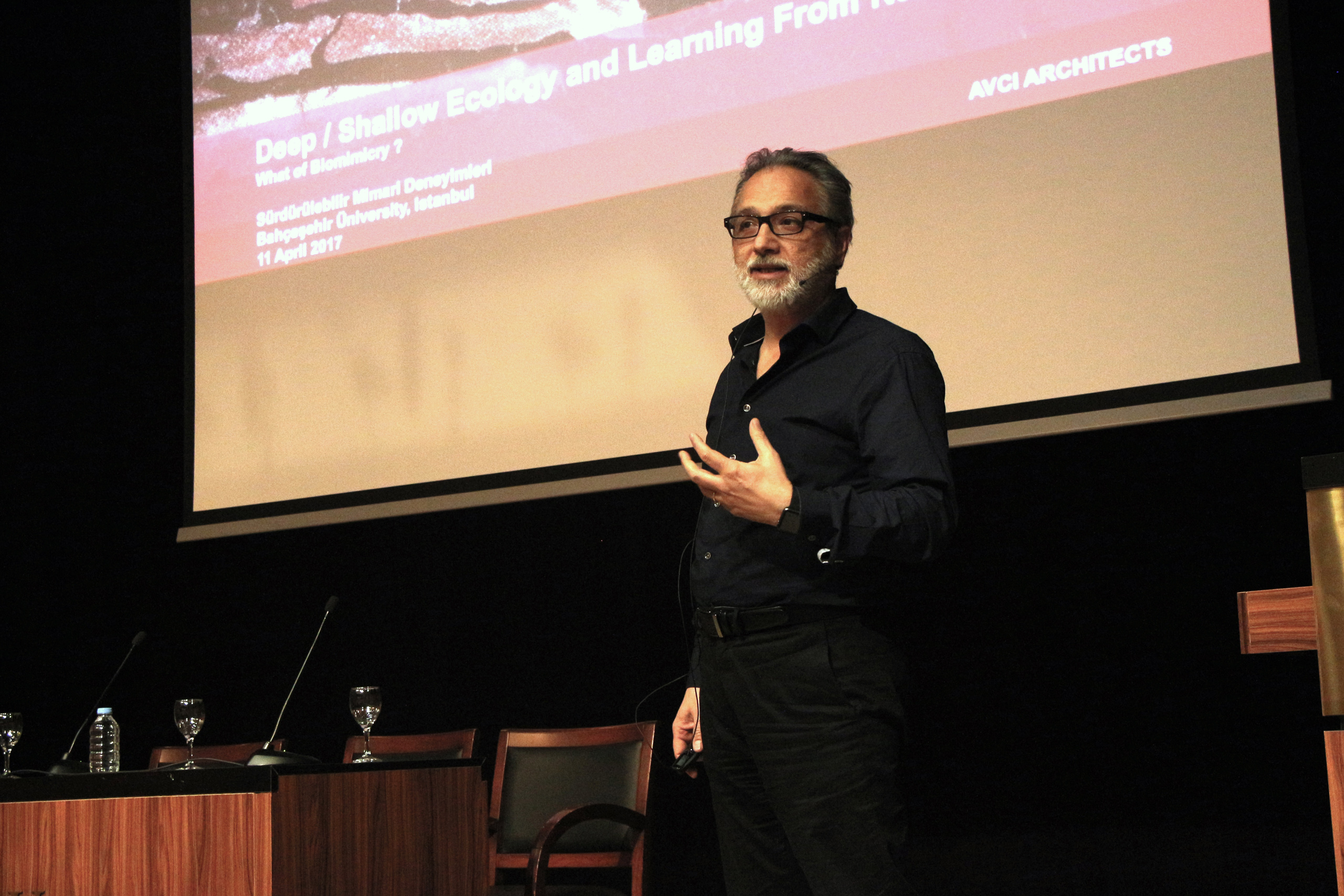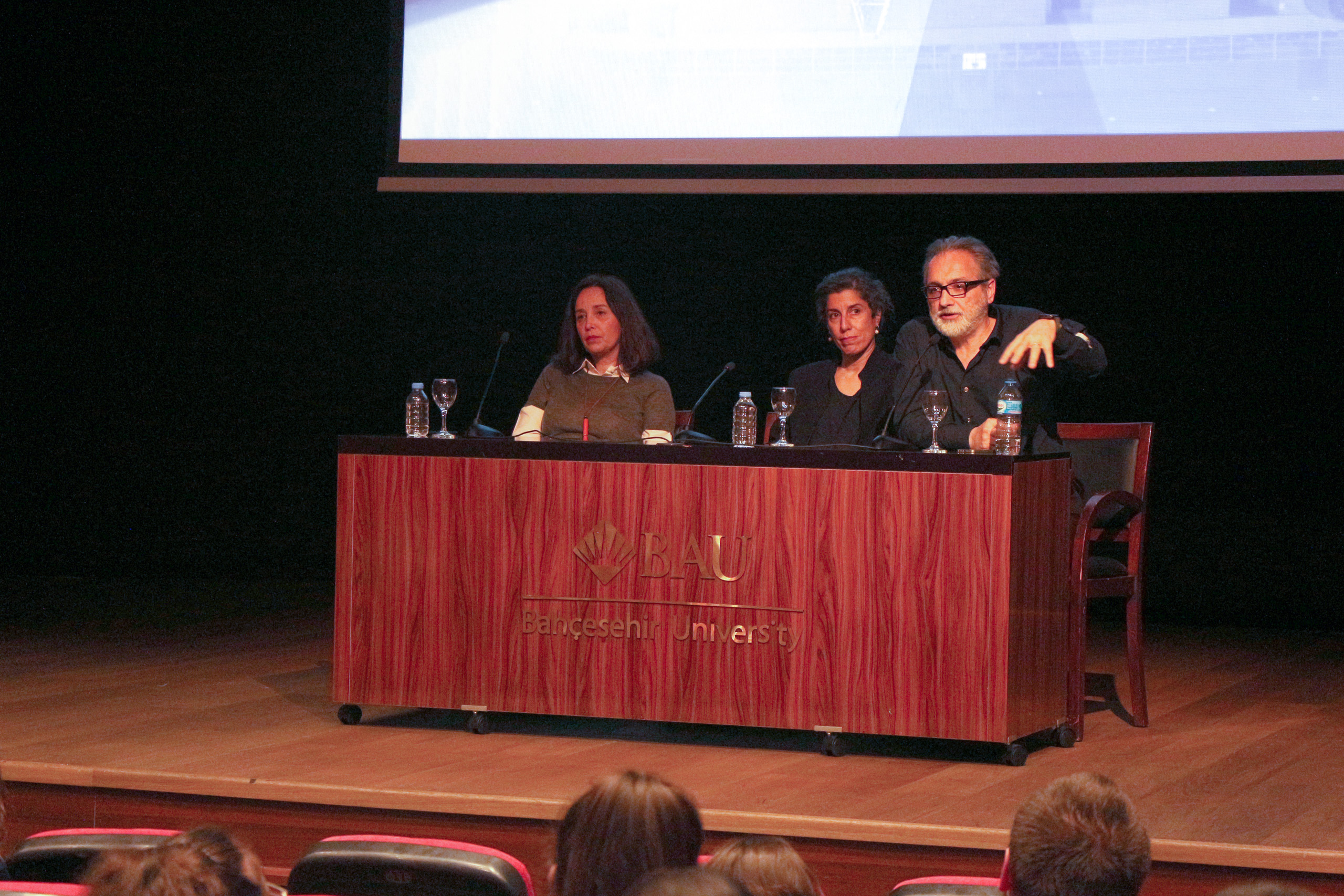Selçuk Avcı Was A Speaker At The BAU MITAS Sustainability Panel…

Architect Selçuk Avcı, who is the founding partner of Avcı Architects, has joined the panel as a speaker where Ayşe Hasol Erktin and Aydan Volkan also participated, which was organized under the title of “Bahçeşehir University Sustainable Architectural Experiences” on April 11, Tuesday.
Selçuk Avcı, who started his speech with the impact of climate change on humans, animals and agricultural areas, maintained his speech in mutual interaction with the students by continuing his speech partly in the form of questions and answers in the event that took place in the Fazıl Say Hall at the Bahçeşehir University Beşiktaş South Campus.
“Genius Loci” Characteristics of the Land
Selçuk Avcı, who included his educational life and experiences in his speech, has indicated that the educational understanding had a great place in the point where he has come today that was formed through the integration of architecture and engineering that he had obtained at the Bath University where he was educated. Selçuk Avcı, who has internalized the concept of ‘designing based on the location’ by adopting the ‘genius loci’, namely the characteristics of the land, has expressed that when this notion comes side by side with the values regarding energy and ecology, the sustainable architecture becomes inevitable.
Selçuk Avcı, who has emphasized that he has followed the sustainable architecture notion after the university education, pointed out that his interest in this practice has settled down further after working with the firms that had experience in relation to the topic. He has mentioned that they have brought a new perspective to ecological design by reinforcing the experience that he has obtained at the Feilden Clegg Bradley, Arup Associates that is among the companies that he has worked at, with the contests that he has won with his own offices.

Sustainability should consider the present day’s needs and also tomorrow’s foresights of needs
Selçuk Avcı who has emphasized that while satisfying the present day’s needs, sustainability, in its simplest form, is also a system of thought that may forecast tomorrow’s needs, has provided some examples regarding exhaustible resources and renewability in addition to this concept. Avcı, who has indicated that sustainability can’t be thought independently of architecture, has evaluated this necessity in the framework of three basic concepts, namely, the ethical, ecological and economical (3Es), that also form his own design principle.
The Labyrinth System as a first
Selçuk Avcı mentioned that As Avcı Architects, they have approached the projects that they have been dealing with through the sustainability perspective in terms of both design and technique, and discussed the technical and design details of the Turkish Contractors Union Building that he took as an example.

In the project where the thermal labyrinth system is implemented for the first time in Turkey being separate from the architectural form that was built with the transparency principle compatible with the institutional identity of the structure, significant amount of energy saving is achieved by using Ankara’s typical climatic characteristics which is the temperature difference between the day and the night. The thermal labyrinth allows the building to be passively cooled by collecting the low night temperatures in the summer months, and passively heated by using the internal heat of the underground in winter.
Additionally, the mesh system made out of stainless steel used in the façade of the building, prevents overheating on the surfaces that are exposed to the sun and optimize the daylight that the building receives. In the building, ecological systems exist such as piping inside the concrete layout that allows massive heating and cooling, the chilled-beam system that allows energy efficiency in the air conditioning of the building, the vitrified elements that allow saving water, solar collectives that are used in providing hot water, collection of rainwater to be used in watering the garden and in the toilets. Approximately 5% of the building’s energy needs is met by the photovoltaic panels installed on the roof of the building. The energy efficient LED lightings located in the building, the automation system that controls the physical state of the building, lighting level automation that is sensitive to daylight and movement and the outer lighting design which reduces the light pollution on the sky constitute other important ecological elements of the building. Selçuk Avcı, who emphasized that they have achieved a holistic approach by preferring low water consuming endemic plants in the landscaping design, has pointed out that the green roof system, where the plants requiring no watering were used, has contributed to energy saving by reducing the heating requirements of the building in summer months while allowing for saving water.

While concluding his speech after the examples that he has given, Selçuk Avcı, who has emphasized that as architects and designers, their role in the scenario of future would be great, underlined that it was a big responsibility to determine the future of the relationship between the humans and nature and every action taken must be taken seriously with this consciousness.



